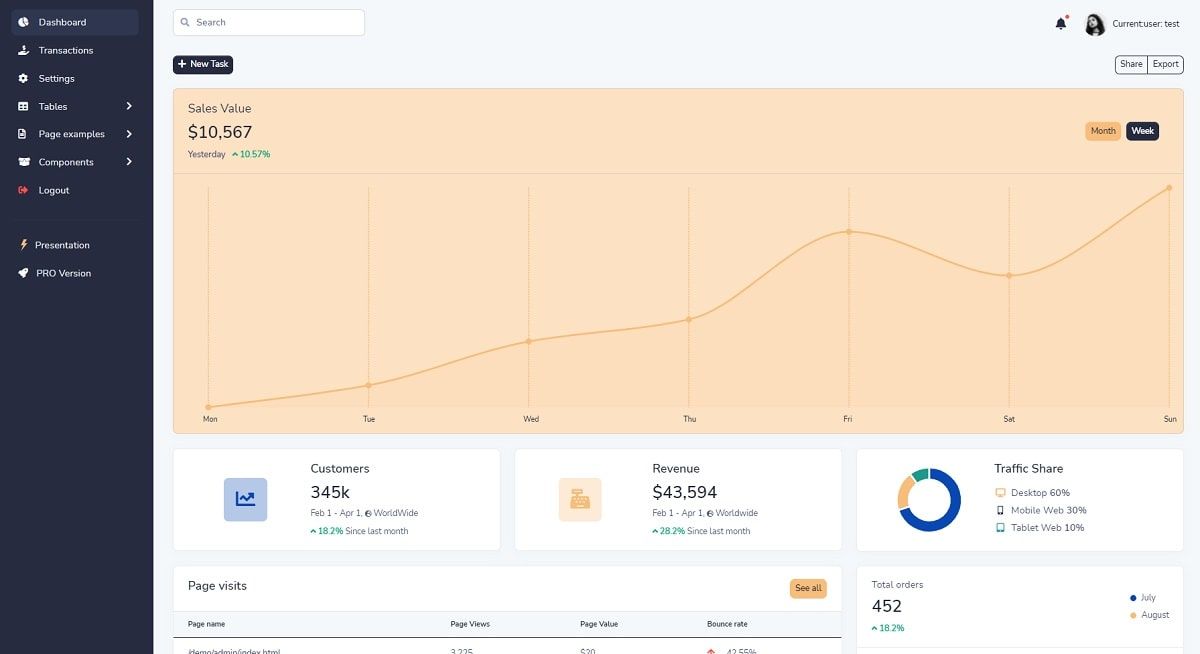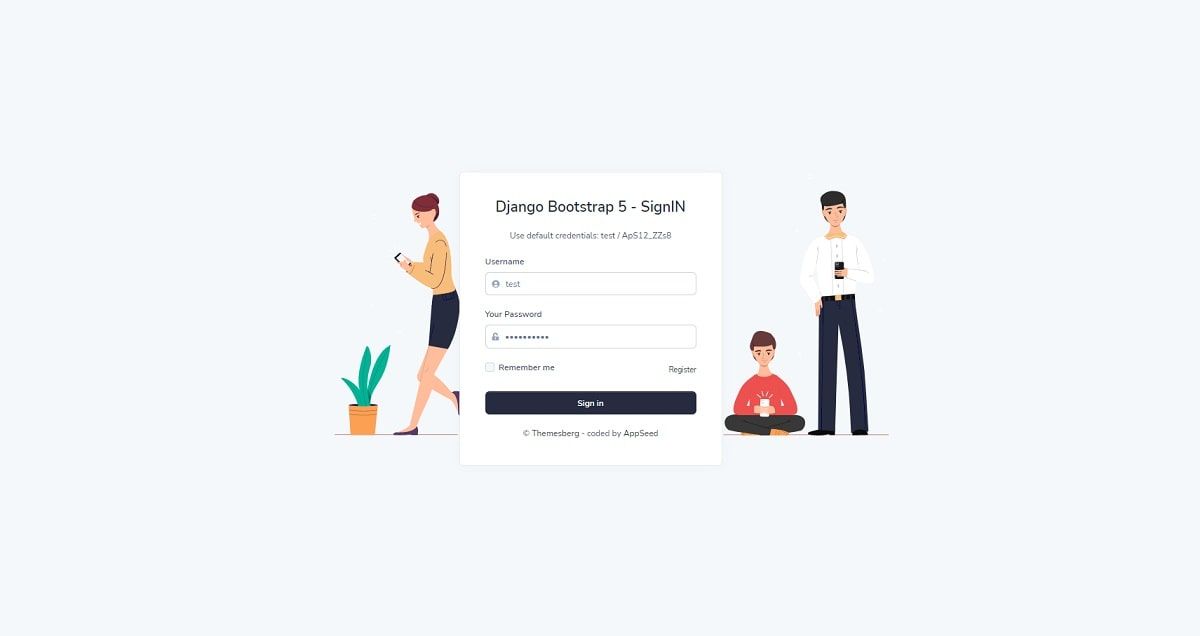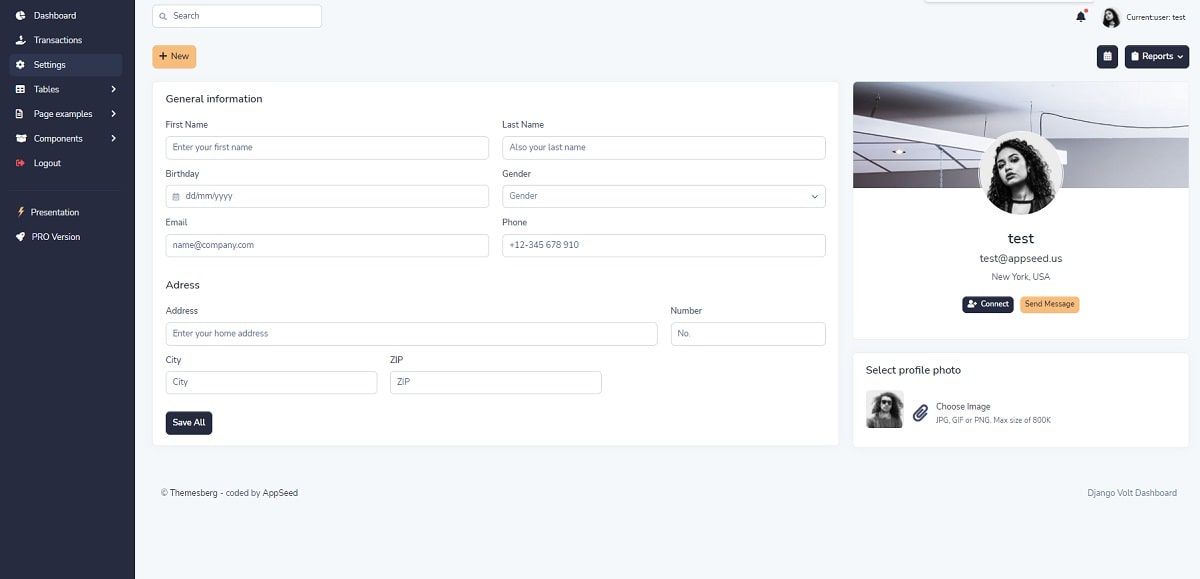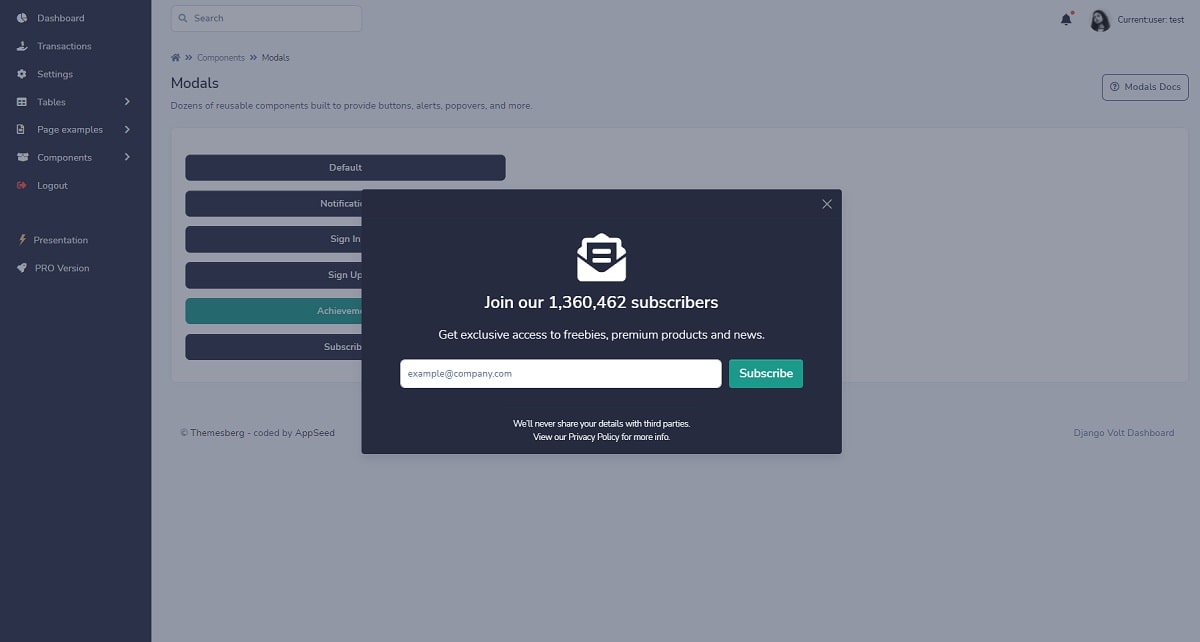Dashboard Volt - Free Django 4 Template
A popular dashboard seed project recently updated to Django 4 (the latest version). The product can be downloaded from Github under the MIT license.

Hello! This article presents an open-source seed project crafted by AppSeed on top of a pixel-perfect Bootstrap 5 design and Django v4 - the latest update of this iconic web framework. Django Volt Dashboard can be downloaded directly from Github and based on the permissive license, used for commercial end-products and eLearning activities. For newcomers, Django is a leading framework actively supported and versioned by programming experts. Thanks for reading!
- 👉 Django Volt Dashboard - LIVE Demo
- 👉 Django Volt Dashboard - Source code (MIT License)
- 🎁 Free Support via email and Discord
Volt Dashboard is a free and open-source Bootstrap 5 Admin Dashboard featuring over 100 components, 11 example pages, and 3 plugins with Vanilla JS. On top of this modern UI, the codebase provides authentication, basic tooling, Docker support and up-to-date dependencies compatible with Django 4.
✨ Start in Docker
Probably the easier way to compile and start the product is via the Docker set up shipped with the product.
Step #1 - Clone the sources from the public repository
$ git clone https://github.com/app-generator/django-volt-dashboard.git
$ cd django-volt-dashboardStep #2 - Start in Docker
$ docker-compose up --build Once all the commands are executed, we should be able to access the app in the browser, create new users and authenticate.

✨ Django 4 Updates
In December 2021 Django Version 4 has been released with various upgrades to the framework, improvements, deprecations, and also a few breaking changes. here is the short-list with all updates:
zoneinfois used as the default time zone- RedisCache backend - provides built-in support for caching
scryptpassword hasher improves the password hashing- Template-based form rendering -
Forms,Formsets, andErrorListare now rendered using the template engine to enhance customization. - Deprecations: support dropped for
PostgreSQL v9.6andOracle v12.2 - Breaking Changes:
CSRF_TRUSTED_ORIGINSconfig parameter. Values in the CSRF_TRUSTED_ORIGINS setting must include the scheme (e.g. 'http://' or 'https://') instead of only the hostname.
For complete information, feel free to access the official Django 4 release note.
✨ Django 4 Volt - Manual Build
The product can be compiled with ease using a classic manual build as provided in the project README. In order to have a successful build, a minimal programming kit should be properly installed in the workstation: Python3, GIT, Node JS (for SCSS compilation), and a modern code editor like VsCode or Atom.
Step #1 - Clone sources
$ git clone https://github.com/app-generator/django-volt-dashboard.git
$ cd django-volt-dashboardStep #2 - Install dependencies via a VENV (virtual environment)
$ virtualenv env
$ source env/bin/activate
$ pip3 install -r requirements.txtStep #3 - Set up the database
$ python manage.py makemigrations
$ python manage.py migrateStep #4 - Start the app
$ # Start the application (development mode)
$ python manage.py runserver
Django 4 Volt - Alerts Page

Thanks for reading! For more resources, feel free to access:
- ✨ More Free Dashboards crafted in Django, Flask, and React
- ✨ More Admin Dashboards - a huge index with products